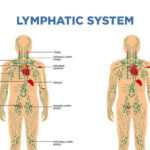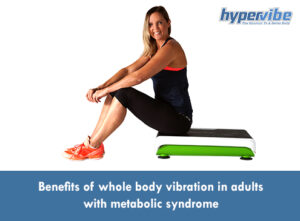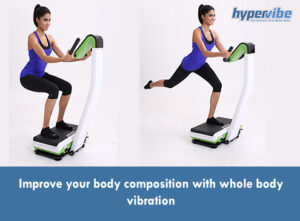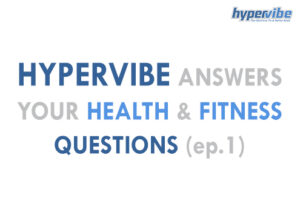How to Improve Your Stamina Using Whole Body Vibration
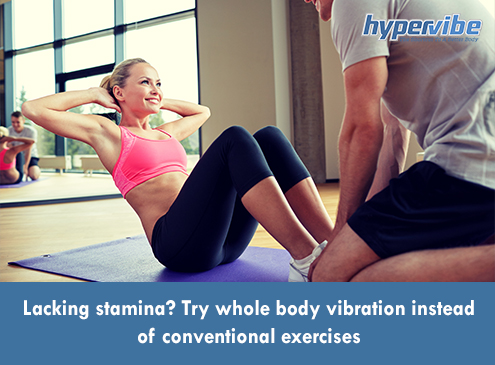
The terms stamina and endurance are sometimes used interchangeably, but the former usually refers to one’s athletic power and ability to do cardio activities such as running for a longer time interval, while the latter is more often used for referring to one’s ability to withstand hardship.
Indeed, stamina in sports refers to one’s ability to continue exercising for a long period of time and to continue putting in the effort even after an intense or long and demanding workout. Although all sports require some level of stamina, some physical activities such as running a marathon for example require more stamina than leisure swimming or other less intense sports.
High levels of stamina require a strong and healthy heart, lungs, and muscles, as well as good resistance to mental and physical fatigue. People who have more stamina are more likely to focus during sports activities and to overcome fatigue, as their bodies are more used to the level of intensity and they’re not distracted by physical exhaustion.
Moreover, having good stamina means that you’re less likely to develop certain conditions, such as high blood pressure, diabetes, or heart disease, because your cardiovascular system functions well, your immunity is strong and your body is generally stronger and healthier. You’re also less likely to suffer from mood swings, as exercise produces endorphins, which improve mood.
Increasing your stamina not only strengthens your muscles and allows them to work more efficiently, but also increases your lungs’ capacity to take in more oxygen, and this means your body can perform faster and better.
The best way to increase your stamina is through cardio and aerobic activities such as running, swimming, jogging, skipping rope, cycling, playing a sport, or doing other activities that increase your high rate and alternate fast with low speeds.
Typically, the recommended exercises for increasing stamina are the ones that alternate short-term bursts of energy with moderate intensity exercises: for example, alternating running with jogging, or doing interval training, or adding whole body vibration exercises to your regular aerobic routine.
Exercises that last for longer, such as running a marathon, for example, require a lot of endurance, and are excellent for building stamina, but maybe too challenging for someone who’s just starting to work on their stamina. So if you’re not yet able to perform well for longer time intervals, you can start with a combination of WBV and cardio exercises to build your resistance.
Using whole body vibration exercises to increase stamina
Vibration exercises can be a good replacement for conventional ones for people who lack stamina due to various conditions, but still want to stay active and practice some sort of physical activity.
Researchers from the Islamic Azad University, Tehran, have shown that in diabetes 2 sufferers, whole body vibration can successfully replace aerobic exercise, the effect on the levels of blood glucose being similar.
Their study was published in the Asian Journal of Sports Medicine and involved 30 diabetic males who underwent either aerobic exercise or vibration training. The aerobic sessions consisted of 30-60 minutes of walking, at 60-70% of the maximum heartbeat, while vibration workouts were performed for 8-12 minutes, at 2 mm amplitude and 30 Hz frequency.
After 8 weeks, there were no significant differences in the concentration of blood sugar in the aerobic and WBV groups, but those in the exercise groups had lower fasting glucose levels than those who performed no exercise (the control group). The scientists concluded that people with diabetes type 2, who lack the stamina for aerobic exercise, can safely opt for whole body vibration as an effective alternative.
Another category of people who may not be able to perform regular cardio and aerobic exercises to increase their stamina is represented by those with high blood pressure. Whole body vibration seems to be a safe alternative, this type of workout having a positive effect on blood pressure, muscle strength, and arterial stiffness in hypertensive people.
One of the studies that supports this statement was published in the Menopause journal last year, being conducted by researchers at the Florida State University, USA. The study involved 25 postmenopausal women with hypertension or prehypertension, who underwent whole body vibration training for 12 weeks.
The effects of this form of physical activity on muscle strength and the cardiovascular system were measured after 3 months, scientists finding that WBV decreases cardiovascular and disability risk, reducing blood pressure and arterial stiffness.
Also, in COPD sufferers, conventional exercise may exacerbate the symptoms, so not all forms of workouts are well tolerated. However, WBV was found to be safe and effective in improving the functional performance of the lower limbs without affecting exercise tolerance.
The effects of vibration workouts in people with COPD have been investigated in several studies, such as the one published in the BMC Pulmonary Medicine journal by researchers from the Australian Catholic University.
Thus, if your health state doesn’t allow you to perform conventional workouts to increase stamina, you can rely on whole body vibration for keeping your cardiovascular system in good shape.
Have something to add to this article? Comment below or join our Facebook community and share your thoughts with us.





